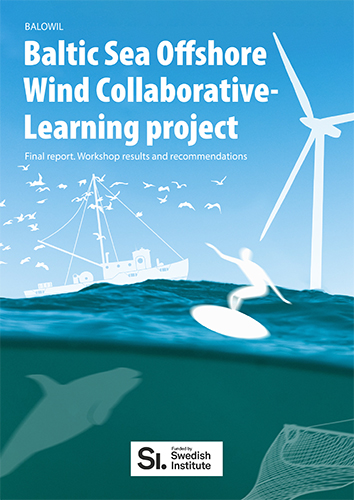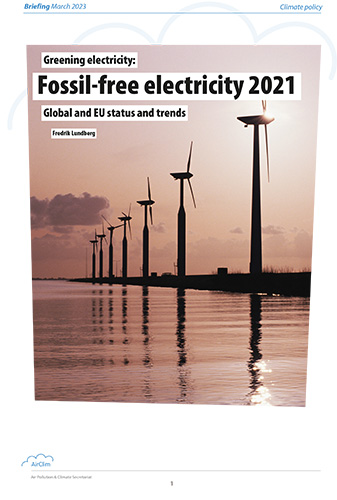
Still possible to stay below 2°C
 © Lars-Erik Håkansson
© Lars-Erik Håkansson
Global warming can be limited to below 2 degrees according to simulations made for the IPCC 5th assessment report.
The fifth assessment report of the Intergovernmental Panel on Climate Change (IPCC) is now underway and will present next year possible scenarios which show that greenhouse gas emissions can be reduced so that global average temperature increase stays at 1.5 degrees until 2100. In February 2012, scientists from the Max Planck Institute for Meteorology (MPI-M) and the German Climate Computing Centre (DKRZ) made public new climate simulations using MPI-M’s new climate model. The new climate simulations were carried out on DKRZ’s supercomputer and occupied one quarter of total computing capacity over a period of two years. The Max Planck Institute for Meteorology is among the world’s leading institutes for climate research and the recent results of Hamburg’s climate model calculations will be integrated into the fifth assessment report of the IPCC.
“Our results demonstrate the possibility to limit global warming to below two degrees Celsius throughout this century. But it requires a drastic reduction of carbon dioxide emissions,” says Professor Jochem Marotzke, Director at the Max Planck Institute for Meteorology and vice-chair of the World Climate Research Programme.
By using an international model comparison project, researchers were able to simulate the complex carbon cycle as well as vegetation dynamics in climate projections for the 21st century.
In case of an increase in CO2 emissions the simulations suggest not only an increase in temperature but also a rapid progression of ocean acidification, according to MPI-M. Recent data indicate that, due to carbon dioxide pollution, ocean acidification has increased by 30 per cent compared to pre-industrial times. Scientists doubt that many organisms will be able to cope with environmental change. Oceanic calcifying organisms will be particularly affected.
MPI-M warns that in the event of continuously increasing emissions of carbon dioxide, as assumed in the least favorable scenario, scientists expect a rise in the global mean temperature by up to 4°C by 2100. (Figure).
Professor Marotzke said that according to recent calculations Arctic summer sea ice melts faster than predicted. “With a smaller sea ice cover, more sunlight is absorbed by the dark open water of the polar ocean. This water therefore warms efficiently during summer (albedo effect). The melting rate of sea ice is directly connected with global warming.”
In December 2011 the International Energy Agency warned in a press-release that without a bold change of policy direction, the world will lock itself into an insecure, inefficient and high-carbon energy system. “In the IEA’s World Energy Outlook (WEO) the central New Policies Scenario assumes that if recent government commitments are implemented in a cautious manner, primary energy demand increases by one-third between 2010 and 2035, with 90 per cent of the growth in non-OECD economies.”
IEA’s analysis shows that in the New Policies Scenario, cumulative CO2 emissions over the next 25 years amount to three-quarters of the total from the past 110 years, leading to a long-term average temperature rise of 3.5°C. Chinas per-capita emissions match the OECD average in 2035. The IEA concludes if the current energy policy were not changed the world is on an even more dangerous track, to an increase of 6°C.
“As each year passes without clear signals to drive investment in clean energy, the ‘lock-in’ of high-carbon infrastructure is making it harder and more expensive to meet our energy security and climate goals,” said Fatih Birol, IEA Chief Economist. The WEO presents a scenario that traces an energy path consistent with meeting the globally agreed goal of limiting the temperature rise to 2°C. Four-fifths of the total energy-related CO2 emissions permitted by 2035 in the scenario are already locked-in by existing capital stock, including power stations, buildings and factories.
IEA warns that without further action by 2017, the energy-related infrastructure then in place would generate all the CO2 emissions allowed in the 450 Scenario up to 2035. Anything built from now on that produces carbon will do so for decades, and this “lock-in” effect will be the single factor most likely to produce irreversible climate change, the IEA says. “If this is not rapidly changed within the next five years, the results are likely to be disastrous.”
The IPCC is now in full preparation of its Fifth Assessment Report (AR5). The report, which will be finalised in 2014, will be made up of four reports: the three IPCC Working Groups’ contributions dealing respectively with The Physical Science Basis (September 2013), Impacts, Adaptation and Vulnerability (March 2014), and Mitigation of Climate Change (April 2014), and the Synthesis Report (October 2014). Each report will contain its own Summary for Policymakers which is approved in detail by all member countries of the IPCC and represents a formally agreed statement on key findings and uncertainties.
According to the IPCC, in comparison with previous Assessment Reports, the AR5 will put greater emphasis on assessing the socio-economic aspects of climate change and its implications for sustainable development.
Reinhold Pape
The IPCC Assessment Reports
The IPCC Fifth Assessment Report (AR5) follows the overall mandate of the IPCC, the main activity of which is to prepare comprehensive assessment reports about climate change at regular intervals, typically of about five to seven years. The IPCC’s First Assessment Report (FAR) in 1990 played a decisive role in leading to the United Nations Framework Convention on Climate Change (UNFCCC), which was opened for signature at the Rio de Janeiro Summit in 1992. The Second Assessment Report (SAR) of 1995 provided key input for the negotiations of the Kyoto Protocol in 1997. The Third Assessment Report (TAR) of 2001 provided further information relevant to the development of the UNFCCC and the Kyoto Protocol. The Fourth Assessment Report (AR4) paid greater attention to the integration of climate change with sustainable development policies and the relation¬ships between mitiga- tion and adaptation, and led to a wider awareness of climate change issues in the general public and among decision-makers, inspiring world leaders to agree on the Bali Action Pla
Reference: IPCC

 Download this issue
Download this issue




















